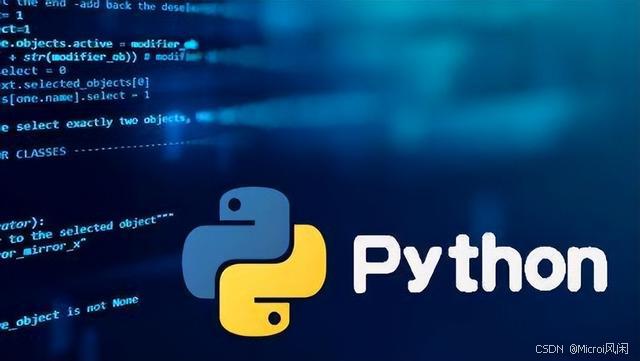Python 进阶学习之全栈开发学习路线
文章目录
- 前言
- 一、Python全栈开发技术栈
-
- 1. 前端技术选型
- 2. 后端框架选择
- 3. 数据库访问
- 二、开发环境配置
-
- 1. 工具链推荐
- 2. VS Code终极配置
- 3. 项目依赖管理
- 三、现代Python工程实践
-
- 1. 项目结构规范
- 2. 自动化测试策略
- 3. CI/CD流水线
- 四、部署策略大全
-
- 1. 传统服务器部署
- 2. 容器化部署
- 3. 无服务器部署
- 五、性能优化技巧
-
- 1. 数据库优化
- 2. 异步处理
- 3. 静态资源优化
- 结语
前言
Python 作为当今最流行的编程语言之一,凭借其简洁的语法、丰富的生态系统和广泛的应用场景,成为全栈开发的绝佳选择。本文将系统介绍 Python 全栈开发的技术栈、工具链和最佳实践,帮助开发者快速构建从前端到后端的完整应用。
一、Python全栈开发技术栈
1. 前端技术选型
虽然 Python 不是传统的前端语言,但现代 Python 全栈开发中,我们有以下选择:
-
传统模板渲染:
Django模板/Jinja2 -
现代前端框架集成:
Django+Vue.js/ReactFlask+Angular
-
纯Python方案:
- Pynecone:使用纯 Python 构建 Web UI
- Flet:构建跨平台应用
- Streamlit:快速数据应用
# Streamlit示例:10行代码创建一个数据仪表盘
import streamlit as st
import pandas as pd
import numpy as np
st.title('实时数据分析仪表盘')
data = pd.DataFrame(np.random.randn(50, 3), columns=['A', 'B', 'C'])
st.line_chart(data)
st.sidebar.slider('数据范围', 0, 100, 25)
2. 后端框架选择
重量级方案:Django
Django 是"包含电池"的全功能框架,适合中大型项目:
# Django模型示例
from django.db import models
class Blog(models.Model):
title = models.CharField(max_length=100)
content = models.TextField()
created_at = models.DateTimeField(auto_now_add=True)
def __str__(self):
return self.title
轻量级方案:Flask/FastAPI
# FastAPI示例
from fastapi import FastAPI
from pydantic import BaseModel
app = FastAPI()
class Item(BaseModel):
name: str
price: float
@app.post("/items/")
async def create_item(item: Item):
return {"item_name": item.name, "item_price": item.price}
3. 数据库访问
- ORM:
Django ORM、SQLAlchemy - 异步ORM:Tortoise-ORM、SQLModel
- NoSQL:MongoEngine(MongoDB)、Redis-py
# SQLAlchemy示例
from sqlalchemy import create_engine, Column, Integer, String
from sqlalchemy.ext.declarative import declarative_base
Base = declarative_base()
engine = create_engine('sqlite:///example.db')
class User(Base):
__tablename__ = 'users'
id = Column(Integer, primary_key=True)
name = Column(String)
email = Column(String)
Base.metadata.create_all(engine)
二、开发环境配置
1. 工具链推荐
- IDE:VS Code + Python 插件 或 PyCharm专业版
- 版本管理:
pyenv + poetry - 代码质量:
- 格式化:
Black、isort - 静态检查:mypy、pylint
- 安全扫描:bandit
- 格式化:
2. VS Code终极配置
.vscode/settings.json 推荐配置:
{
"python.pythonPath": ".venv/bin/python",
"python.linting.enabled": true,
"python.linting.pylintEnabled": true,
"python.formatting.provider": "black",
"python.linting.mypyEnabled": true,
"python.testing.pytestEnabled": true,
"editor.formatOnSave": true,
"python.analysis.typeCheckingMode": "strict"
}
3. 项目依赖管理
使用 pyproject.toml 替代传统的 requirements.txt :
[tool.poetry]
name = "my-project"
version = "0.1.0"
description = "My awesome Python project"
[tool.poetry.dependencies]
python = "^3.8"
flask = "^2.0.1"
sqlalchemy = "^1.4.0"
[tool.poetry.dev-dependencies]
pytest = "^6.2.4"
black = "^21.7b0"
[build-system]
requires = ["poetry-core>=1.0.0"]
build-backend = "poetry.core.masonry.api"
三、现代Python工程实践
1. 项目结构规范
推荐的项目结构:
my_project/
├── .github/ # GitHub配置
│ └── workflows/ # CI/CD工作流
├── docs/ # 项目文档
├── src/ # 源代码
│ └── my_project/ # 主包
│ ├── __init__.py
│ ├── api/ # API路由
│ ├── core/ # 核心逻辑
│ ├── db/ # 数据库相关
│ └── models/ # 数据模型
├── tests/ # 测试代码
├── .env # 环境变量
├── .gitignore
├── pyproject.toml # 项目配置
├── README.md
└── setup.py # 兼容性安装脚本
2. 自动化测试策略
- 单元测试:pytest + pytest-cov
- API测试:requests + pytest
- E2E测试:Playwright
# pytest示例
import pytest
from src.my_project.core import calculate
def test_calculate():
assert calculate(2, 3) == 5
with pytest.raises(ValueError):
calculate("a", "b")
3. CI/CD流水线
GitHub Actions示例( .github/workflows/test.yml ):
name: Python CI
on: [push, pull_request]
jobs:
test:
runs-on: ubuntu-latest
steps:
- uses: actions/checkout@v2
- name: Set up Python
uses: actions/setup-python@v2
with:
python-version: '3.10'
- name: Install dependencies
run: |
pip install poetry
poetry install
- name: Run tests
run: poetry run pytest --cov=src
- name: Upload coverage
uses: codecov/codecov-action@v1
四、部署策略大全
1. 传统服务器部署
Nginx + Gunicorn 方案:
# 安装依赖
sudo apt install nginx
# 配置Gunicorn
gunicorn -w 4 -b 0.0.0.0:8000 my_project.wsgi:application
# Nginx配置示例 (/etc/nginx/sites-available/my_project)
server {
listen 80;
server_name example.com;
location / {
proxy_pass http://127.0.0.1:8000;
proxy_set_header Host $host;
proxy_set_header X-Real-IP $remote_addr;
}
}
2. 容器化部署
Dockerfile 示例:
# 多阶段构建
FROM python:3.10-slim as builder
WORKDIR /app
COPY pyproject.toml poetry.lock ./
RUN pip install poetry && \
poetry config virtualenvs.in-project true && \
poetry install --no-dev
FROM python:3.10-slim
WORKDIR /app
COPY --from=builder /app/.venv ./.venv
COPY . .
CMD ["./.venv/bin/gunicorn", "-w", "4", "-b", "0.0.0.0:8000", "my_project.wsgi:application"]
3. 无服务器部署
使用 Zappa 部署到 AWS Lambda :
# zappa_settings.json
{
"dev": {
"app_function": "my_project.wsgi.application",
"aws_region": "us-east-1",
"profile_name": "default",
"project_name": "my-project",
"runtime": "python3.10",
"s3_bucket": "my-project-bucket"
}
}
五、性能优化技巧
1. 数据库优化
- 使用
select_related/prefetch_related(Django) - 添加适当索引
- 考虑使用
Redis缓存
# Django ORM优化示例
# 差: 产生N+1查询
books = Book.objects.all()
for book in books:
print(book.author.name) # 每次循环都查询author
# 好: 使用select_related
books = Book.objects.select_related('author').all()
2. 异步处理
使用 Celery 处理耗时任务:
# tasks.py
from celery import Celery
app = Celery('tasks', broker='pyamqp://guest@localhost//')
@app.task
def process_data(data):
# 耗时处理逻辑
return result
3. 静态资源优化
- 使用
WhiteNoise服务静态文件 - 前端资源
CDN加速 - 启用
Gzip压缩
结语
Python 全栈开发提供了从原型设计到生产部署的完整解决方案。通过合理选择技术栈、遵循工程最佳实践并利用现代工具链,开发者可以高效构建健壮的应用程序。无论是初创项目还是企业级应用,Python 生态系统都能提供合适的工具和框架。
希望本文能为您的 Python 全栈开发之旅提供全面指导。实践是最好的学习方式,建议从一个小项目开始,逐步探索Python全栈开发的各个方面。
